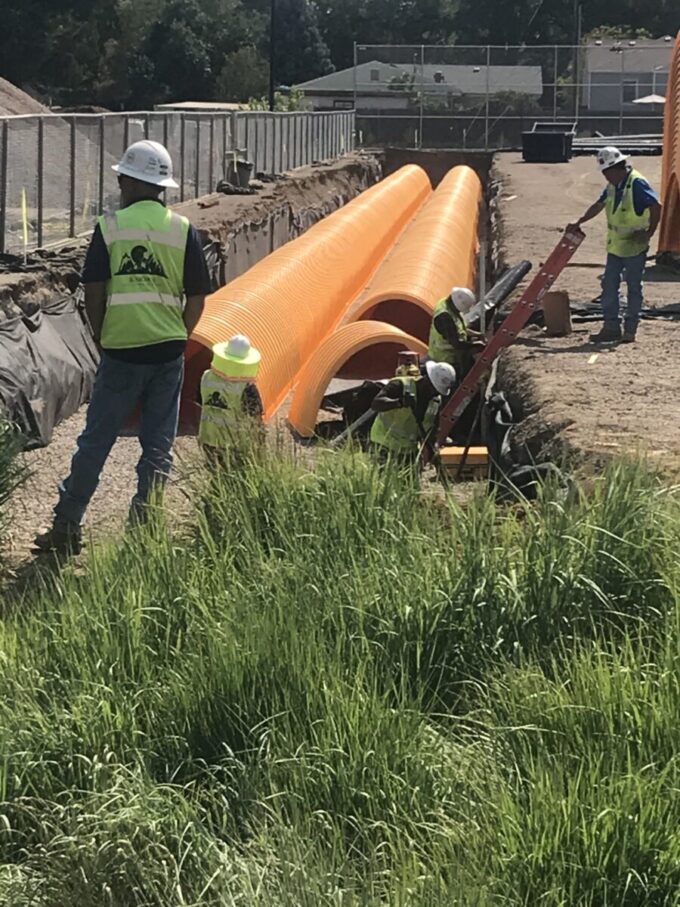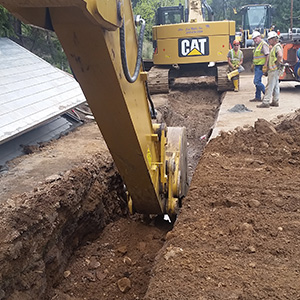In commercial development, managing stormwater is crucial, often achieved through underground stormwater detention systems. Here’s an in-depth look at what underground detention involves, its considerations, advantages, and disadvantages, along with regulatory compliance and the role of experienced civil engineering teams.
What is Underground Stormwater Detention?
Underground stormwater detention involves storing excess rainwater or runoff underground temporarily. This system helps control the rate and volume of stormwater discharged into the municipal drainage system or natural water bodies.

Typical Conditions for Consideration
- Limited Surface Area: When space for traditional above-ground detention ponds is limited.
- Urban Development: In densely built areas where maximizing land use is crucial.
- Regulatory Requirements: When local regulations mandate stormwater management measures.
Advantages of Underground Detention
- Space Efficiency: Maximizes land use compared to surface ponds.
- Aesthetics: Maintains site aesthetics without visible ponds or basins.
- Maintenance Ease: Generally requires less annual maintenance than surface systems.
Disadvantages of Underground Detention
- Higher Costs: Initial construction costs can be higher than surface alternatives.
- Complex Installation: Requires specialized construction techniques, materials, and equipment.
- Maintenance Challenges: Access for inspection and maintenance can be more challenging and heavily regulated by the local jurisdiction.
Importance of Compliance with Local Regulations
Meeting local jurisdiction regulations is critical, and some jurisdictions may not allow it. Regulations often specify design criteria, stormwater management goals, and discharge limits, ensuring environmental protection and community safety. Initial meetings early on with the jurisdictional authorities are crucial to the implementation of underground detention for a project.
Role of Experienced Civil Engineering Teams
An experienced civil engineering team is indispensable:
- Design Expertise: Designs compliant systems tailored to site-specific conditions while mitigating construction costs as a primary design parameter.
- Regulatory Navigation: Works with local jurisdiction to navigate the permit processes and ensures compliance with local codes.
In a recent project, our team designed an underground stormwater detention system for a mixed use development, complying with local regulations and allowing the site to fit additional units which provided greater returns for the developer. By integrating underground stormwater detention, commercial projects can achieve sustainable stormwater management while meeting regulatory requirements and optimizing land use. While initial costs and installation complexities exist, partnering with skilled civil engineers ensures effective design and regulatory adherence. Reach out to our team of Civil Engineering experts at EVstudio to discuss the applicability of underground detention and the value it can add to your project.
For further information see the following references to suppliers we regularly work with:










